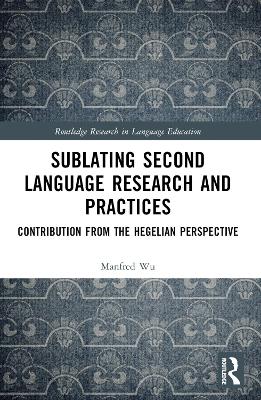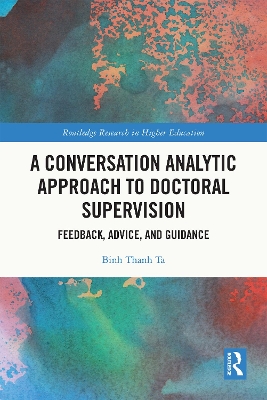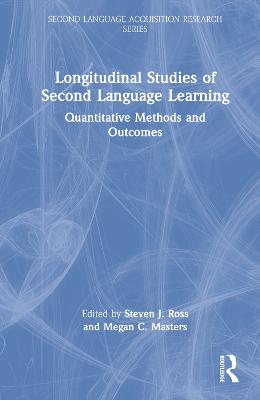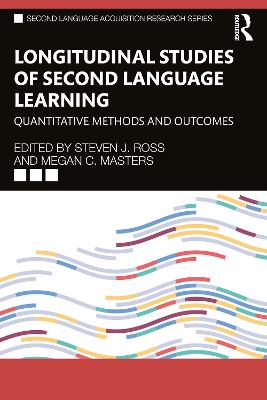Development of L2 Interactional Competence
 portes grátis
portes grátis
Development of L2 Interactional Competence
A Multimodal Study of Complaining in French Interactions
Skogmyr Marian, Klara
Taylor & Francis Ltd
11/2022
254
Dura
Inglês
9781032221168
15 a 20 dias
Descrição não disponível.
Contents
Foreword
Acknowledgments
1. Introduction
1.1 A praxeological research perspective
1.2 Aim and research questions
1.3 Outline of the book
References
2. L2 interactional competence and its development
2.1 Epistemological roots and current understanding of L2 IC
2.2 Empirical findings about the development of L2 IC
2.2.1 Developing practices for action
2.2.2 Developing linguistic resources for interaction
2.2.3 Developing interactional routines and shared interactional histories
2.3 Cumulative evidence about the development of L2 IC and research gaps
References
3. Complaining in (L1) interaction
3.1 Core features of complaints
3.2 Structural organization of complaints
3.2.1 Complaint initiations
3.2.2 Complaint development
3.2.3 Recipient responses to complaints
3.2.4 Complaint closings
3.3 Interactional resources for complaining
3.3.1 Verbal and linguistic resources
3.3.2 Prosodic and other non-linguistic resources
3.4 Complaining in L2 interaction
3.5 Cumulative evidence about complaining and research gaps
References
4. Investigating change longitudinally: Methodological concerns and data
4.1 EMCA and CA-SLA
4.2 Longitudinal CA: Research design and challenges
4.3 This study: Empirical material
4.3.1. Setting and participants
4.3.2 Recordings, supplementary material
4.3.3 Transcription and anonymization
4.3.4 Determining the analytical focus and establishing collections
4.3.5 Focal participants
4.3.6 Overview of collections
4.3.7 Comparability
References
5. The structural organization of L2 complaints
5.1 Interactional building blocks of indirect complaints
5.2 Moving into complaints
5.2.1 Elementary level
5.2.2 Upper-intermediate/advanced level
5.3 Co-constructing complaints
5.3.1 Elementary level
5.3.2 Upper-intermediate/advanced level
5.4 Discussion
References
6. Interactional resources for complaining in the L2
6.1 Negative assessments
6.1.1 Elementary level
6.1.2 Upper-intermediate/advanced level
6.1.3 Negative assessments: Quantitative comparison
6.2 Direct-reported speech and reenactments
6.2.1 Elementary level
6.2.2 Upper-intermediate/advanced level
6.2.3 Direct-reported speech and reenactments: Quantitative comparison
6.3 Discussion
References
7. The interactional history of a complainable
7.1 Case study 1: Suresh
7.1.1 Proffering a complaint about the heat
7.1.2 Proffering a complaint about the cold
7.1.3 Suresh: Summary and intermediate discussion
7.2 Case study 2: Malia
7.2.1 Fall semester of 2016 (months 1-3)
7.2.2 Spring semester of 2017 (months 4-9) - same coparticipants
7.2.3 Fall semester of 2017 (months 11-15) - new coparticipants
7.2.4 Malia: Summary and intermediate discussion
7.3 Discussion
References
8. Discussion of results and perspectives
8.1 Understanding L2 interactional competence and its development
8.1.1 Stability in the basic composition of conversational activities
8.1.2. Turn-taking management: Increased synchronization and co-construction
8.1.3 Sequence and preference organization: Diversification of methods
8.1.4 Linguistic resources for action: Diversification and routinization
8.1.5 Language and the body for action: Change in multimodal practices
8.1.6 Socialization processes in L2 learning: Shared experiences as interactional resource
8.1.7 Increased 'success' in the accomplishment of social activities
8.1.8 Summary of implications for understanding the development of L2 IC
8.2 Understanding complaining in interaction
8.3 Perspectives
References
Appendix: Transcription conventions
Index
Foreword
Acknowledgments
1. Introduction
1.1 A praxeological research perspective
1.2 Aim and research questions
1.3 Outline of the book
References
2. L2 interactional competence and its development
2.1 Epistemological roots and current understanding of L2 IC
2.2 Empirical findings about the development of L2 IC
2.2.1 Developing practices for action
2.2.2 Developing linguistic resources for interaction
2.2.3 Developing interactional routines and shared interactional histories
2.3 Cumulative evidence about the development of L2 IC and research gaps
References
3. Complaining in (L1) interaction
3.1 Core features of complaints
3.2 Structural organization of complaints
3.2.1 Complaint initiations
3.2.2 Complaint development
3.2.3 Recipient responses to complaints
3.2.4 Complaint closings
3.3 Interactional resources for complaining
3.3.1 Verbal and linguistic resources
3.3.2 Prosodic and other non-linguistic resources
3.4 Complaining in L2 interaction
3.5 Cumulative evidence about complaining and research gaps
References
4. Investigating change longitudinally: Methodological concerns and data
4.1 EMCA and CA-SLA
4.2 Longitudinal CA: Research design and challenges
4.3 This study: Empirical material
4.3.1. Setting and participants
4.3.2 Recordings, supplementary material
4.3.3 Transcription and anonymization
4.3.4 Determining the analytical focus and establishing collections
4.3.5 Focal participants
4.3.6 Overview of collections
4.3.7 Comparability
References
5. The structural organization of L2 complaints
5.1 Interactional building blocks of indirect complaints
5.2 Moving into complaints
5.2.1 Elementary level
5.2.2 Upper-intermediate/advanced level
5.3 Co-constructing complaints
5.3.1 Elementary level
5.3.2 Upper-intermediate/advanced level
5.4 Discussion
References
6. Interactional resources for complaining in the L2
6.1 Negative assessments
6.1.1 Elementary level
6.1.2 Upper-intermediate/advanced level
6.1.3 Negative assessments: Quantitative comparison
6.2 Direct-reported speech and reenactments
6.2.1 Elementary level
6.2.2 Upper-intermediate/advanced level
6.2.3 Direct-reported speech and reenactments: Quantitative comparison
6.3 Discussion
References
7. The interactional history of a complainable
7.1 Case study 1: Suresh
7.1.1 Proffering a complaint about the heat
7.1.2 Proffering a complaint about the cold
7.1.3 Suresh: Summary and intermediate discussion
7.2 Case study 2: Malia
7.2.1 Fall semester of 2016 (months 1-3)
7.2.2 Spring semester of 2017 (months 4-9) - same coparticipants
7.2.3 Fall semester of 2017 (months 11-15) - new coparticipants
7.2.4 Malia: Summary and intermediate discussion
7.3 Discussion
References
8. Discussion of results and perspectives
8.1 Understanding L2 interactional competence and its development
8.1.1 Stability in the basic composition of conversational activities
8.1.2. Turn-taking management: Increased synchronization and co-construction
8.1.3 Sequence and preference organization: Diversification of methods
8.1.4 Linguistic resources for action: Diversification and routinization
8.1.5 Language and the body for action: Change in multimodal practices
8.1.6 Socialization processes in L2 learning: Shared experiences as interactional resource
8.1.7 Increased 'success' in the accomplishment of social activities
8.1.8 Summary of implications for understanding the development of L2 IC
8.2 Understanding complaining in interaction
8.3 Perspectives
References
Appendix: Transcription conventions
Index
Este título pertence ao(s) assunto(s) indicados(s). Para ver outros títulos clique no assunto desejado.
Pekarek Doehler;L2 IC;L2 Speaker;Complaint Sequences;Stance Displays;TCU;Elementary Speakers;Marked Prosody;Advanced Speakers;Extreme Case Formulation;Prosodic Matching;Affiliative Responses;Joint Complaints;Stance Expressions;L2 Learning;Negative Stance;Multimodal Packages;B2 C1 Support;Open Class Repair Initiator;Indirect Complaints;Interactional Competence;Swiss People;Conversation Circle;DRS;Assessment Segment
Contents
Foreword
Acknowledgments
1. Introduction
1.1 A praxeological research perspective
1.2 Aim and research questions
1.3 Outline of the book
References
2. L2 interactional competence and its development
2.1 Epistemological roots and current understanding of L2 IC
2.2 Empirical findings about the development of L2 IC
2.2.1 Developing practices for action
2.2.2 Developing linguistic resources for interaction
2.2.3 Developing interactional routines and shared interactional histories
2.3 Cumulative evidence about the development of L2 IC and research gaps
References
3. Complaining in (L1) interaction
3.1 Core features of complaints
3.2 Structural organization of complaints
3.2.1 Complaint initiations
3.2.2 Complaint development
3.2.3 Recipient responses to complaints
3.2.4 Complaint closings
3.3 Interactional resources for complaining
3.3.1 Verbal and linguistic resources
3.3.2 Prosodic and other non-linguistic resources
3.4 Complaining in L2 interaction
3.5 Cumulative evidence about complaining and research gaps
References
4. Investigating change longitudinally: Methodological concerns and data
4.1 EMCA and CA-SLA
4.2 Longitudinal CA: Research design and challenges
4.3 This study: Empirical material
4.3.1. Setting and participants
4.3.2 Recordings, supplementary material
4.3.3 Transcription and anonymization
4.3.4 Determining the analytical focus and establishing collections
4.3.5 Focal participants
4.3.6 Overview of collections
4.3.7 Comparability
References
5. The structural organization of L2 complaints
5.1 Interactional building blocks of indirect complaints
5.2 Moving into complaints
5.2.1 Elementary level
5.2.2 Upper-intermediate/advanced level
5.3 Co-constructing complaints
5.3.1 Elementary level
5.3.2 Upper-intermediate/advanced level
5.4 Discussion
References
6. Interactional resources for complaining in the L2
6.1 Negative assessments
6.1.1 Elementary level
6.1.2 Upper-intermediate/advanced level
6.1.3 Negative assessments: Quantitative comparison
6.2 Direct-reported speech and reenactments
6.2.1 Elementary level
6.2.2 Upper-intermediate/advanced level
6.2.3 Direct-reported speech and reenactments: Quantitative comparison
6.3 Discussion
References
7. The interactional history of a complainable
7.1 Case study 1: Suresh
7.1.1 Proffering a complaint about the heat
7.1.2 Proffering a complaint about the cold
7.1.3 Suresh: Summary and intermediate discussion
7.2 Case study 2: Malia
7.2.1 Fall semester of 2016 (months 1-3)
7.2.2 Spring semester of 2017 (months 4-9) - same coparticipants
7.2.3 Fall semester of 2017 (months 11-15) - new coparticipants
7.2.4 Malia: Summary and intermediate discussion
7.3 Discussion
References
8. Discussion of results and perspectives
8.1 Understanding L2 interactional competence and its development
8.1.1 Stability in the basic composition of conversational activities
8.1.2. Turn-taking management: Increased synchronization and co-construction
8.1.3 Sequence and preference organization: Diversification of methods
8.1.4 Linguistic resources for action: Diversification and routinization
8.1.5 Language and the body for action: Change in multimodal practices
8.1.6 Socialization processes in L2 learning: Shared experiences as interactional resource
8.1.7 Increased 'success' in the accomplishment of social activities
8.1.8 Summary of implications for understanding the development of L2 IC
8.2 Understanding complaining in interaction
8.3 Perspectives
References
Appendix: Transcription conventions
Index
Foreword
Acknowledgments
1. Introduction
1.1 A praxeological research perspective
1.2 Aim and research questions
1.3 Outline of the book
References
2. L2 interactional competence and its development
2.1 Epistemological roots and current understanding of L2 IC
2.2 Empirical findings about the development of L2 IC
2.2.1 Developing practices for action
2.2.2 Developing linguistic resources for interaction
2.2.3 Developing interactional routines and shared interactional histories
2.3 Cumulative evidence about the development of L2 IC and research gaps
References
3. Complaining in (L1) interaction
3.1 Core features of complaints
3.2 Structural organization of complaints
3.2.1 Complaint initiations
3.2.2 Complaint development
3.2.3 Recipient responses to complaints
3.2.4 Complaint closings
3.3 Interactional resources for complaining
3.3.1 Verbal and linguistic resources
3.3.2 Prosodic and other non-linguistic resources
3.4 Complaining in L2 interaction
3.5 Cumulative evidence about complaining and research gaps
References
4. Investigating change longitudinally: Methodological concerns and data
4.1 EMCA and CA-SLA
4.2 Longitudinal CA: Research design and challenges
4.3 This study: Empirical material
4.3.1. Setting and participants
4.3.2 Recordings, supplementary material
4.3.3 Transcription and anonymization
4.3.4 Determining the analytical focus and establishing collections
4.3.5 Focal participants
4.3.6 Overview of collections
4.3.7 Comparability
References
5. The structural organization of L2 complaints
5.1 Interactional building blocks of indirect complaints
5.2 Moving into complaints
5.2.1 Elementary level
5.2.2 Upper-intermediate/advanced level
5.3 Co-constructing complaints
5.3.1 Elementary level
5.3.2 Upper-intermediate/advanced level
5.4 Discussion
References
6. Interactional resources for complaining in the L2
6.1 Negative assessments
6.1.1 Elementary level
6.1.2 Upper-intermediate/advanced level
6.1.3 Negative assessments: Quantitative comparison
6.2 Direct-reported speech and reenactments
6.2.1 Elementary level
6.2.2 Upper-intermediate/advanced level
6.2.3 Direct-reported speech and reenactments: Quantitative comparison
6.3 Discussion
References
7. The interactional history of a complainable
7.1 Case study 1: Suresh
7.1.1 Proffering a complaint about the heat
7.1.2 Proffering a complaint about the cold
7.1.3 Suresh: Summary and intermediate discussion
7.2 Case study 2: Malia
7.2.1 Fall semester of 2016 (months 1-3)
7.2.2 Spring semester of 2017 (months 4-9) - same coparticipants
7.2.3 Fall semester of 2017 (months 11-15) - new coparticipants
7.2.4 Malia: Summary and intermediate discussion
7.3 Discussion
References
8. Discussion of results and perspectives
8.1 Understanding L2 interactional competence and its development
8.1.1 Stability in the basic composition of conversational activities
8.1.2. Turn-taking management: Increased synchronization and co-construction
8.1.3 Sequence and preference organization: Diversification of methods
8.1.4 Linguistic resources for action: Diversification and routinization
8.1.5 Language and the body for action: Change in multimodal practices
8.1.6 Socialization processes in L2 learning: Shared experiences as interactional resource
8.1.7 Increased 'success' in the accomplishment of social activities
8.1.8 Summary of implications for understanding the development of L2 IC
8.2 Understanding complaining in interaction
8.3 Perspectives
References
Appendix: Transcription conventions
Index
Este título pertence ao(s) assunto(s) indicados(s). Para ver outros títulos clique no assunto desejado.
Pekarek Doehler;L2 IC;L2 Speaker;Complaint Sequences;Stance Displays;TCU;Elementary Speakers;Marked Prosody;Advanced Speakers;Extreme Case Formulation;Prosodic Matching;Affiliative Responses;Joint Complaints;Stance Expressions;L2 Learning;Negative Stance;Multimodal Packages;B2 C1 Support;Open Class Repair Initiator;Indirect Complaints;Interactional Competence;Swiss People;Conversation Circle;DRS;Assessment Segment







